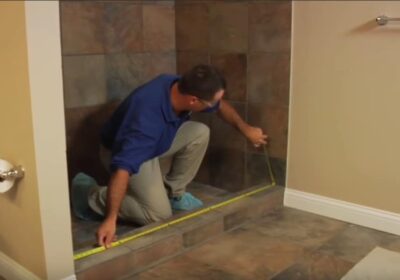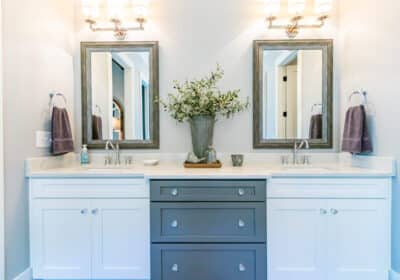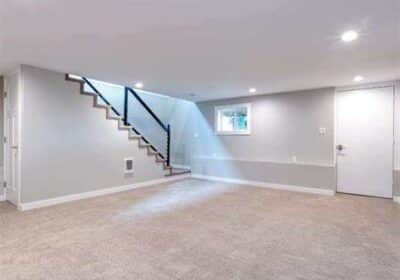▷DIY Backsplash Installation: A Step-by-Step Guide In San Diego

DIY Backsplash Installation: A Step-by-Step Guide In San Diego
Installing a new kitchen backsplash can seem daunting. Many people think it requires professional help. However, with the right guidance, you can tackle this project yourself. This post shares 5 tips to install a new kitchen backsplash that will transform your space. You’ll learn about choosing materials, measuring correctly, and applying adhesive like a pro. Say goodbye to outdated designs and hello to a fresh look. Get ready to elevate your kitchen with confidence and creativity.
Gather Essential Materials
Select Suitable Tiles
Tiles come in many styles and materials. Popular choices include ceramic, glass, and stone. Each type has unique qualities. For example, glass tiles reflect light well. Stone tiles provide a natural look. Choose tiles that match your kitchen’s theme. Measure the area to know how many tiles you need. This helps avoid running out mid-project.
Choose Adhesives and Tools
Adhesives are crucial for a strong bond. Thin-set mortar is common for most tile types. For glass tiles, use a special adhesive designed for them. You will also need tools like a trowel, tile cutter, and level. A sponge is useful for cleaning excess adhesive. Make sure your tools are in good condition before starting.
Prepare Cleaning Supplies
Cleaning supplies help maintain a tidy workspace. Gather items like rags, buckets, and sponges. A cleaner that works with your tile type is important. For grout, have a mixing bucket ready. Keep everything within reach while working. This saves time and keeps the project flowing smoothly.
Prepare the Wall
Clean the Surface
Start by cleaning the wall thoroughly. Use a mixture of warm water and mild soap. This removes dirt, grease, and old adhesive. A clean surface helps the new backsplash stick better. Wipe the wall with a sponge or cloth. Rinse it well and let it dry completely.
Prime the Wall
Next, apply a primer to the wall. This step is crucial for ensuring proper adhesion. Choose a primer suitable for your wall type. Use a roller or brush to spread it evenly. Allow the primer to dry according to the manufacturer’s instructions. This process can take a few hours.
Ensure Level Surface
Check if the wall is level before installing the backsplash. Use a level tool for accuracy. If you find any uneven areas, fix them with joint compound or patching material. Smooth out any bumps and allow it to dry completely. A level surface prevents tiles from shifting later on.
Plan the Layout
Measure and Mark Area
Start by measuring the area where the backsplash will go. Use a tape measure for accuracy. Mark the boundaries with a pencil. This step ensures that your layout is clear and precise. It also helps in avoiding mistakes during installation.
Arrange Tiles Before Installation
Lay out the tiles on a flat surface before attaching them. This allows you to see how they fit together. Try different patterns or arrangements. Adjust as needed until you find a design you like. This practice saves time and helps visualize the final look.
Consider Aesthetic Design
Think about the overall style of your kitchen. Choose colors and patterns that complement your cabinets and countertops. For example, if you have dark cabinets, lighter tiles can create contrast. If your kitchen is modern, sleek tiles work well.
Mixing textures can also enhance the design. For instance, combining glossy and matte finishes adds depth.
Apply Mortar and Tiles
Spread Mortar Evenly
Start by mixing the mortar according to the package instructions. Use a trowel to spread it on the wall. Aim for a thickness of about 1/4 inch. Cover only a small area at a time to prevent it from drying out. An even layer ensures that the tiles stick well.
Position Tiles with Spacers
After applying the mortar, place your first tile. Press it firmly into the mortar. Use spacers between each tile to keep them evenly spaced. This helps maintain a uniform look. Continue placing tiles in rows, checking alignment regularly. Adjust as necessary before the mortar sets.
Allow Proper Setting Time
Once all tiles are in place, let them set. Most mortars require at least 24 hours to cure properly. Avoid touching or adjusting tiles during this time. This ensures the tiles bond securely to the wall. After curing, remove spacers and clean any excess mortar that may have seeped out.
Apply Grout and Finish
Mix and Apply Grout
Grout fills the spaces between tiles. Start by mixing the grout according to the package instructions. Use a drill with a mixing attachment for an even blend. Once mixed, use a rubber float to apply the grout. Press it firmly into the joints. Work in small sections to avoid it drying out before you finish.
Wipe Excess Grout
After applying, remove excess grout from the tile surface. Use a damp sponge for this task. Wipe diagonally across the tiles to prevent pulling grout from the joints. Rinse the sponge frequently to keep it clean. This step is crucial for achieving a neat look. Allow the grout to set for about 15 to 30 minutes. After that, buff the tile surface with a soft cloth.
Seal Grout for Longevity
Sealing your grout protects it from stains and moisture. Wait at least 48 hours after grouting before applying sealant. This allows the grout to cure properly. Use a small brush or applicator to apply the sealant evenly. Make sure to cover all joints thoroughly. Follow the manufacturer’s guidelines for drying times and reapplication.
FAQs
What Materials Do I Need To Install A Kitchen Backsplash?
You’ll need tiles, adhesive mortar, grout, a trowel, a level, a measuring tape, and a utility knife. Having these materials ready simplifies the installation process.
How Do I Prepare The Wall For A Backsplash?
Clean the wall thoroughly to remove grease or dirt. Patch any holes and ensure the surface is smooth. This creates an ideal base for your new tiles.
How Should I Plan The Layout Of My Backsplash?
Measure your wall space accurately. Lay out your tiles on the floor first to visualize the design. This helps avoid mistakes during installation.
What Type Of Mortar Should I Use For Tile Installation?
Use thin-set mortar for most ceramic and glass tiles. It provides strong adhesion and is easy to work with for DIY projects.
How Long Does It Take For The Mortar To Dry Before Grouting?
Typically, you should wait 24 hours for the mortar to set properly. This ensures your tiles are securely in place before applying grout.
Can I Use Premixed Grout For My Kitchen Backsplash?
Yes, premixed grout is convenient and easy to use. However, ensure it’s suitable for your tile type and follow manufacturer instructions for best results.
How Can I Clean My New Backsplash After Installation?
Use a mild soap solution and a soft cloth to clean your backsplash. Avoid harsh chemicals that can damage the tiles or grout over time.
Conclusion
Installing a new kitchen backsplash can transform your space and boost your home’s value. By following these five tips, you’ll ensure a smooth process from gathering materials to finishing touches. Each step is crucial for achieving a professional look that you can be proud of.
Don’t hesitate to dive in and get started on your backsplash project. Your kitchen deserves that upgrade, and you’ve got the know-how now. Share your results with friends or family—who knows, you might inspire someone else to tackle their own renovation! Happy tiling!
To benefit from our superior services, contact Pro Services General Contractors at (888) 564-3777 right away.
Contact Pro Services General Contractors today for our amazing remodeling services.
BELOW ARE SOME OF THE MANY HOME INTERIOR SERVICES THAT WE OFFER
-
Kitchen BacksplashKitchen Backsplash
-
Kitchen CabinetsKitchen Cabinets
-
Kitchen CountertopsKitchen Countertops
-
Kitchen FaucetsKitchen Faucets
-
Kitchen LightingKitchen Lighting
-
Kitchen SinksKitchen Sinks
-
Kitchen TileKitchen Tile
-
Bathroom AdditionBathroom Addition
-
Bathroom CabinetsBathroom Cabinets
-
Bathroom FaucetsBathroom Faucets
-
Bathroom SinksBathroom Sinks
-
Bathroom TileBathroom Tile
-
Bathroom VanitiesBathroom Vanities
-
Shower DoorsShower Doors
-
Shower SystemsShower Systems
-
Basement RemodelingBasement Remodeling
-
Crown Moulding / BaseboardsCrown Moulding / Baseboards
-
Dining Room RemodelingDining Room Remodeling
-
Home Office RemodelingHome Office Remodeling
-
Living Room RemodelingLiving Room Remodeling
-
ADUADU
-
Disability / Mobility ADUDisability / Mobility ADU
-
Finished BasementFinished Basement
-
First StoryFirst Story
-
Garage ConversionGarage Conversion
-
Granny FlatGranny Flat
-
Second StorySecond Story
-
Engineered StoneEngineered Stone
-
Engineered WoodEngineered Wood
-
Green FlooringGreen Flooring
-
Hardwood FlooringHardwood Flooring
-
Laminate FlooringLaminate Flooring
-
Natural Stone FlooringNatural Stone Flooring
-
Tile FlooringTile Flooring
-
Kitchen TileKitchen Tile
-
Bathroom TileBathroom Tile
-
Pool TilePool Tile
-
Exterior TileExterior Tile
Related Posts

▷6 Steps to Choosing and Installing Your New Kitchen Countertops In San Diego
6 Steps to Choosing and Installing Your New Kitchen Countertops In San Diego Did you know…

▷5 Tips To Install New Bathroom Faucets In San Diego
5 Tips To Install New Bathroom Faucets In San DiegoLooking to upgrade your bathroom? Installing…

▷Expert Advice for Installing a Stunning Tile Backsplash In San Diego
Expert Advice for Installing a Stunning Tile Backsplash In San Diego Looking to revamp your…

▷5 Benefits of Remodeling Your Living Room In San Diego
5 Benefits of Remodeling Your Living Room In San Diego Did you know that on average,…

▷5 Practical Tips for Combining Kitchen and Dining Rooms in Your Remodel In San Diego
5 Practical Tips for Combining Kitchen and Dining Rooms in Your Remodel In San Diego Embarking…

▷Tips to Measure and Install Shower Doors: A Step-by-Step DIY Guide In San Diego
Tips to Measure and Install Shower Doors: A Step-by-Step DIY Guide In San Diego Did you…

▷Ways to Remove and Install Bathroom Vanity Cabinets In San Diego
5 Reasons to Increase Your Home Value with Basement Remodeling In San Diego Did you…

▷5 Reasons to Increase Your Home Value with Basement Remodeling In San Diego
5 Reasons to Increase Your Home Value with Basement Remodeling In San Diego Did you know…
